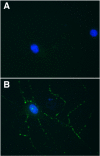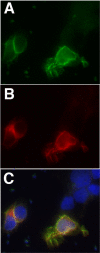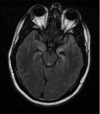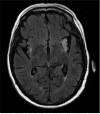Paraneoplastic disorders
- PMID: 25837906
- PMCID: PMC4443809
- DOI: 10.1212/01.CON.0000464180.89580.88
Paraneoplastic disorders
Abstract
Purpose of review: Paraneoplastic disorders are autoimmune diseases associated with risks for specific cancers and marked by specific autoantibodies. They cause diverse clinical syndromes of the central and peripheral nervous systems.
Recent findings: In the peripheral nervous system, autoimmunity to synaptic or axonal proteins has long been recognized to associate with specific cancers. In these disorders, typified by myasthenia gravis, the antibodies are directly toxic, and recovery with immunotherapy is the rule. In contrast, the classic paraneoplastic syndromes involve a higher risk of cancer, autoantibodies to intracellular proteins (eg, Hu proteins), T-cell-dependent disease mechanisms targeting the CNS or peripheral nervous system, and a poor response to treatment. Following the discovery of N-methyl-D-aspartate (NMDA) receptor antibodies, a new and expanding group of disorders involving autoantibodies to CNS synaptic and neuronal membrane proteins and a favorable response to immunotherapy emerged. A final group of disorders involves antibodies to intracellular synaptic proteins, such as glutamic acid decarboxylase 65 (GAD65), and it is unclear whether these diseases involve antibody or T-cell mechanisms.
Summary: Neurologists should recognize the clinical syndromes associated with paraneoplastic disorders, utilize autoantibody and other testing to confirm the diagnosis, understand the pathologic basis of the diseases, and promptly give appropriate therapies.
Figures






References
-
- Andras C, Ponyi A, Constantin T, Csiki Z, Szekanecz E, Szodoray P, Danko K. Dermatomyositis and polymyositis associated with malignancy: a 21-year retrospective study. The Journal of rheumatology. 2008;35:438–444. - PubMed
-
- Burk K, Wick M, Roth G, Decker P, Voltz R. Antineuronal antibodies in sporadic late-onset cerebellar ataxia. Journal of neurology. 2010;257:59–62. - PubMed
-
- Chan KH, Vernino S, Lennon VA. ANNA-3 anti-neuronal nuclear antibody: marker of lung cancer-related autoimmunity. Annals of neurology. 2001;50:301311. - PubMed
Publication types
MeSH terms
Substances
Grants and funding
LinkOut - more resources
Full Text Sources
Research Materials
